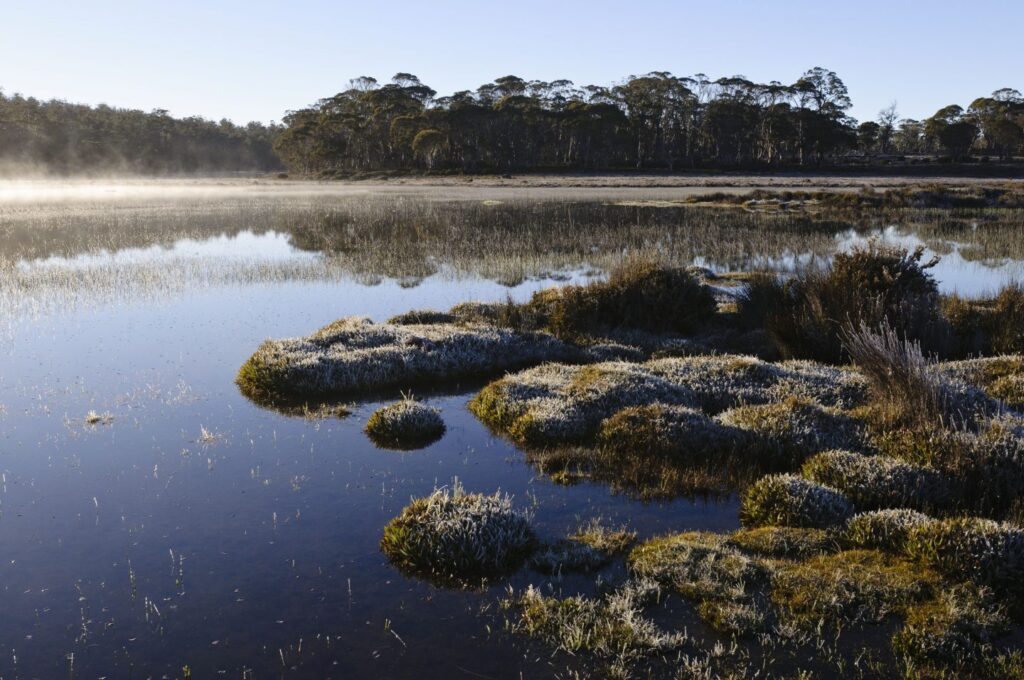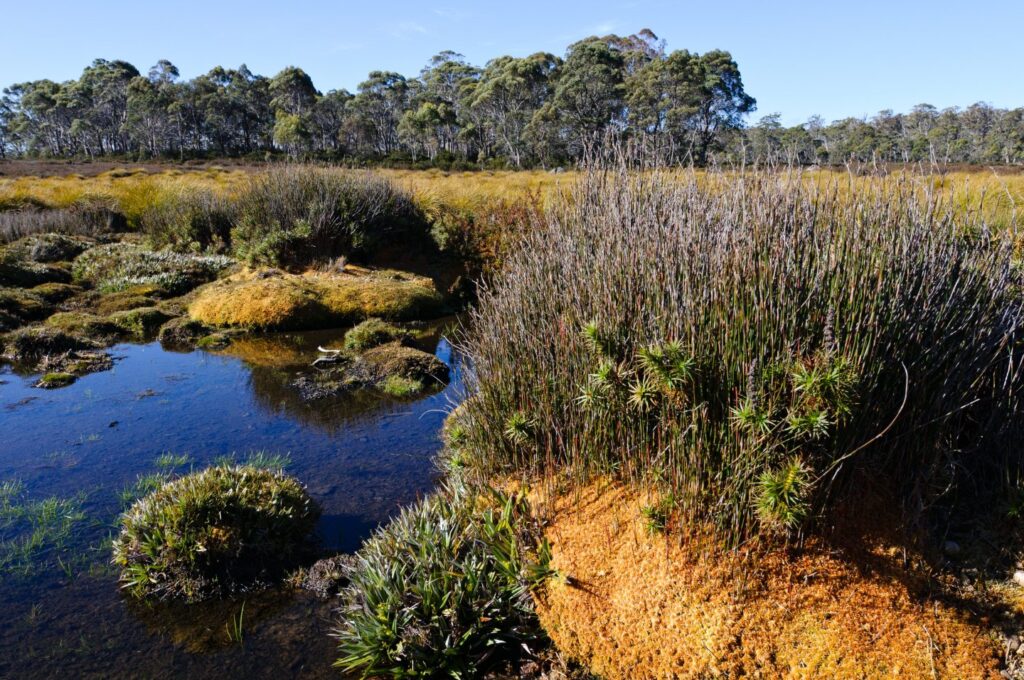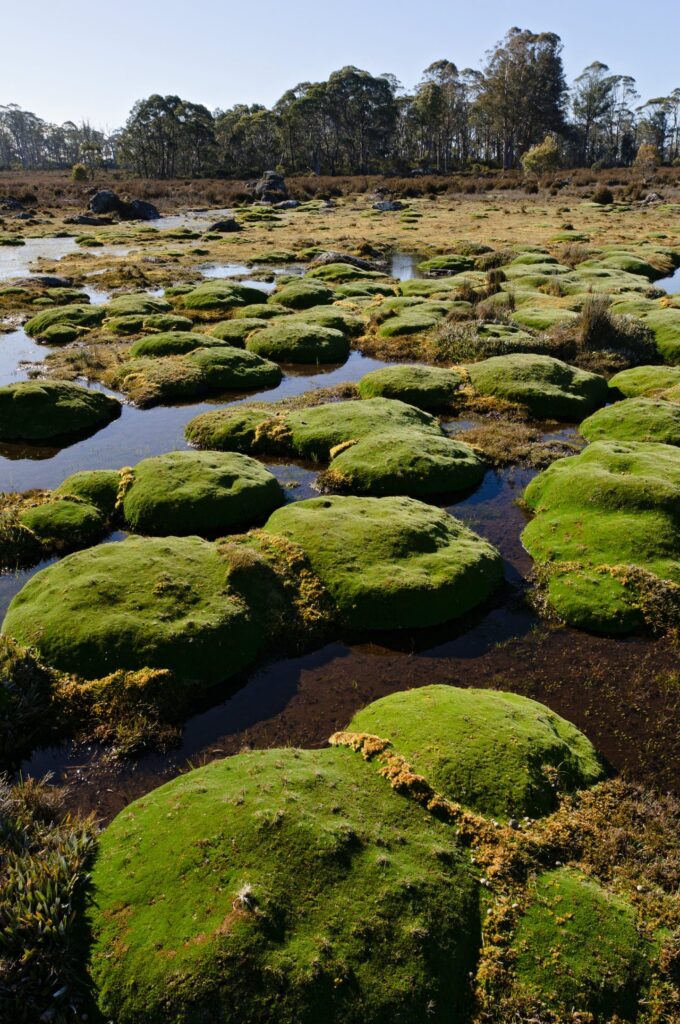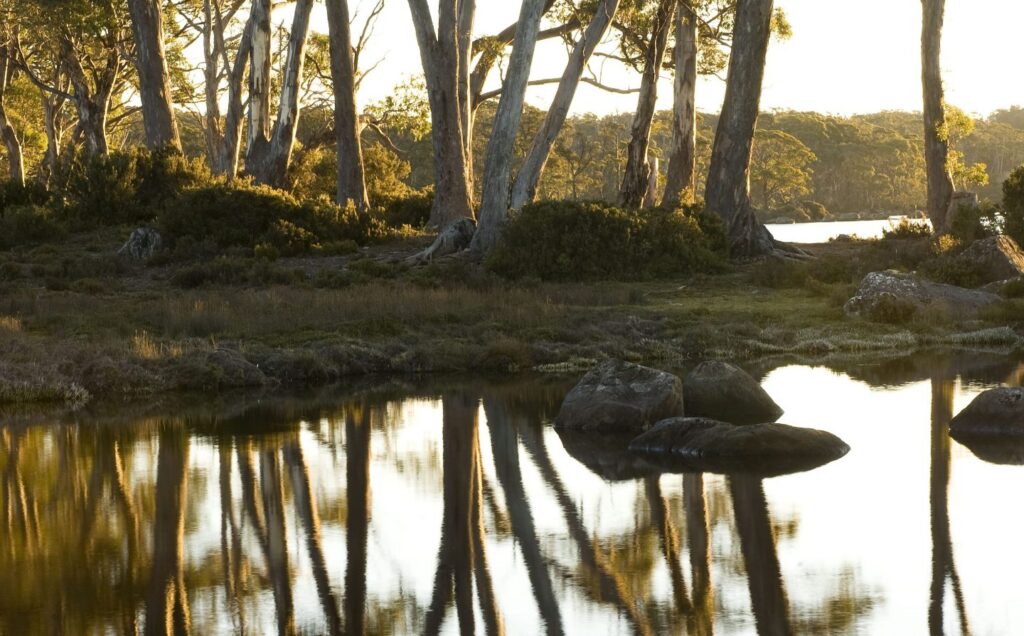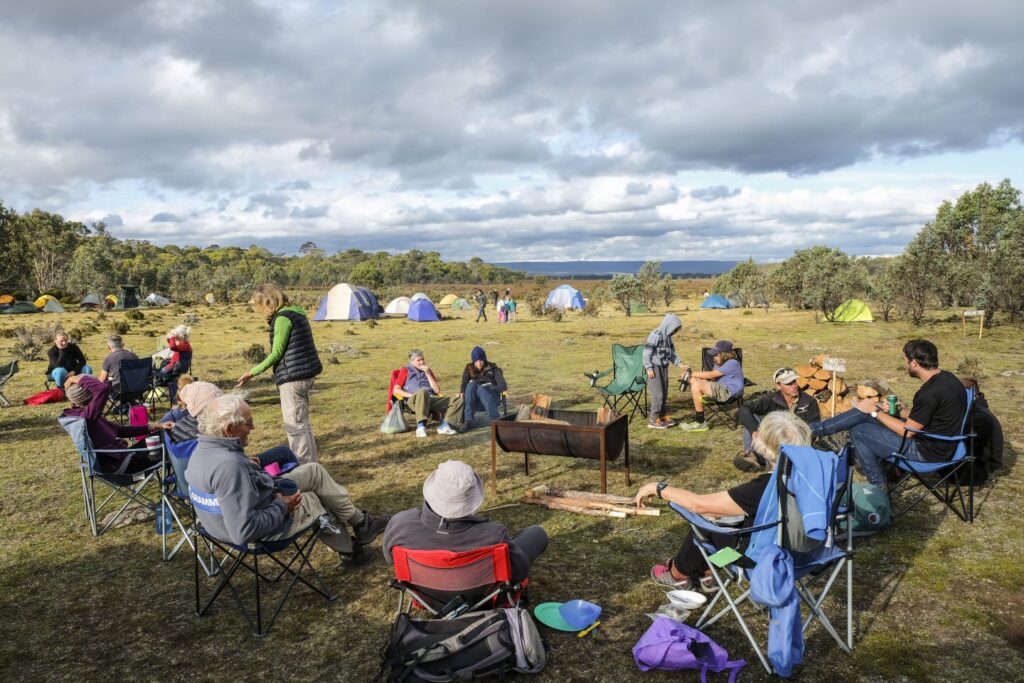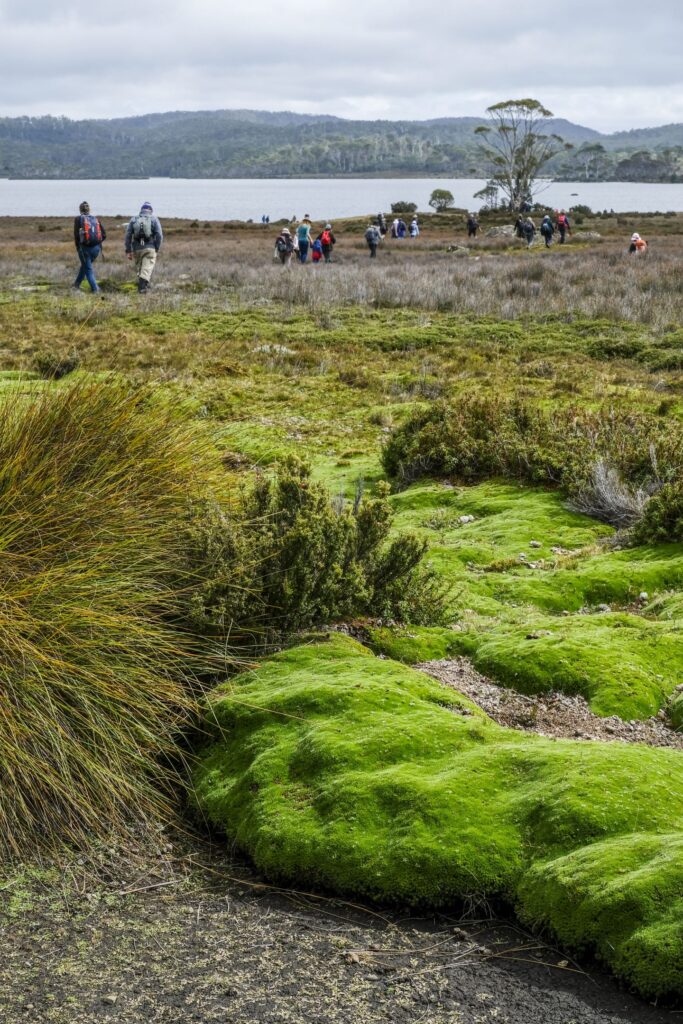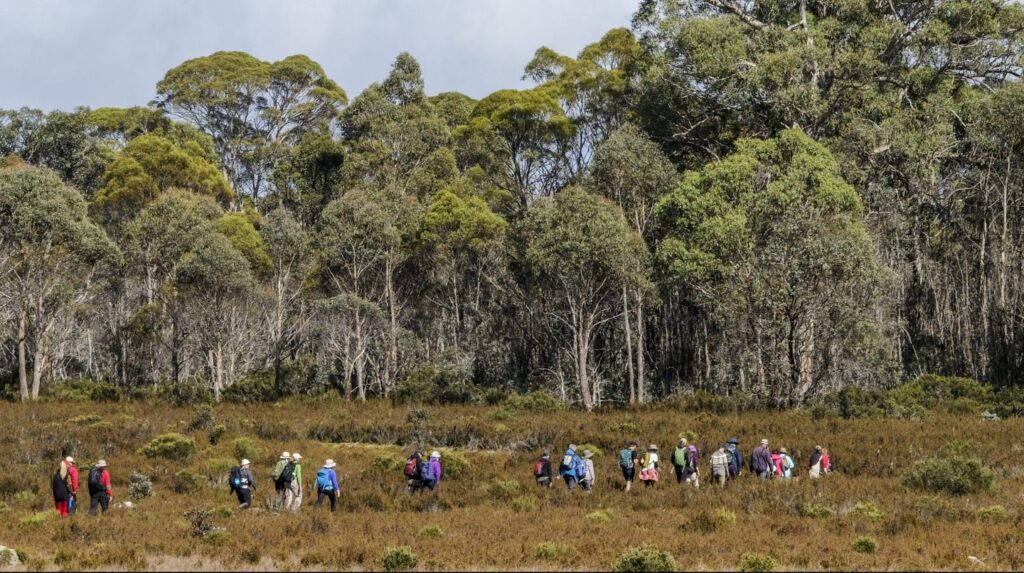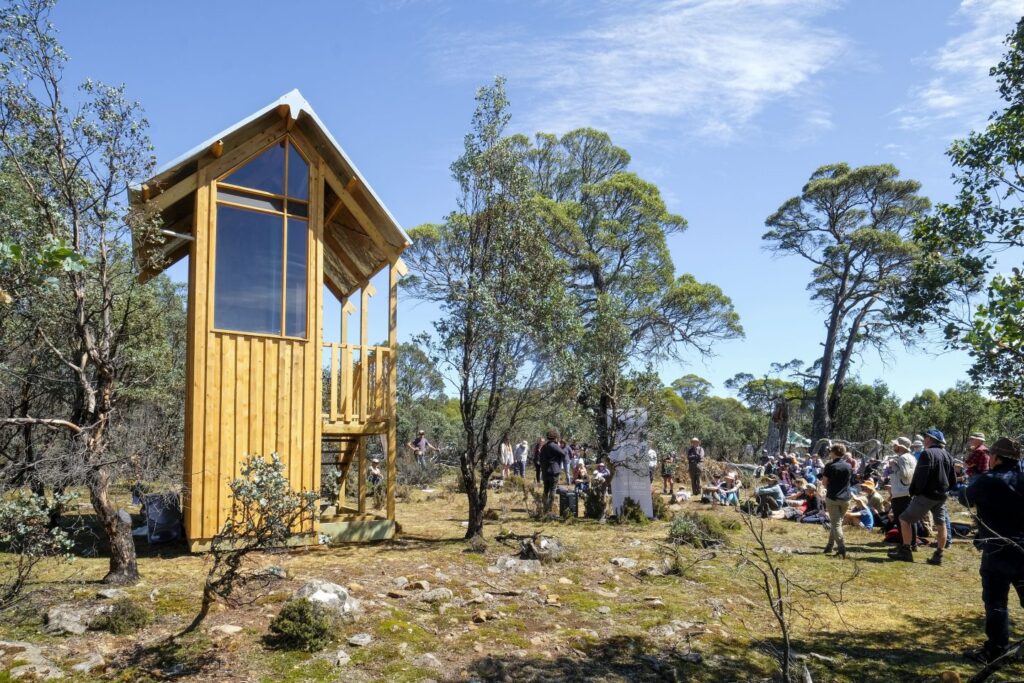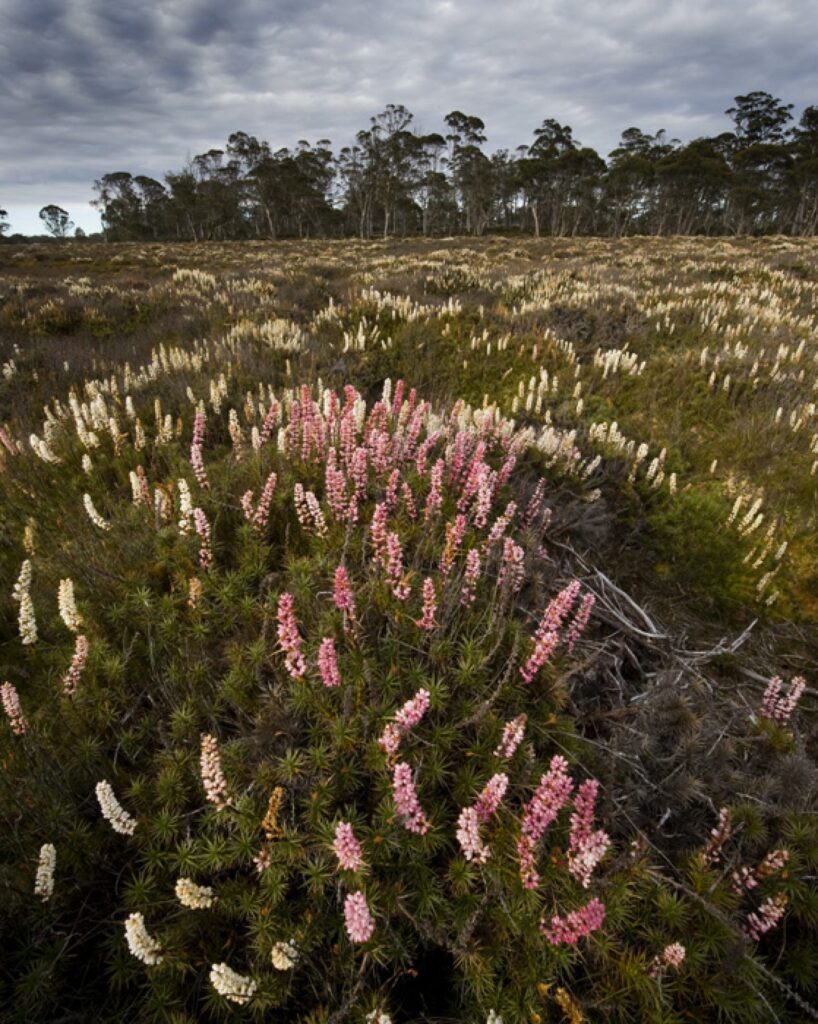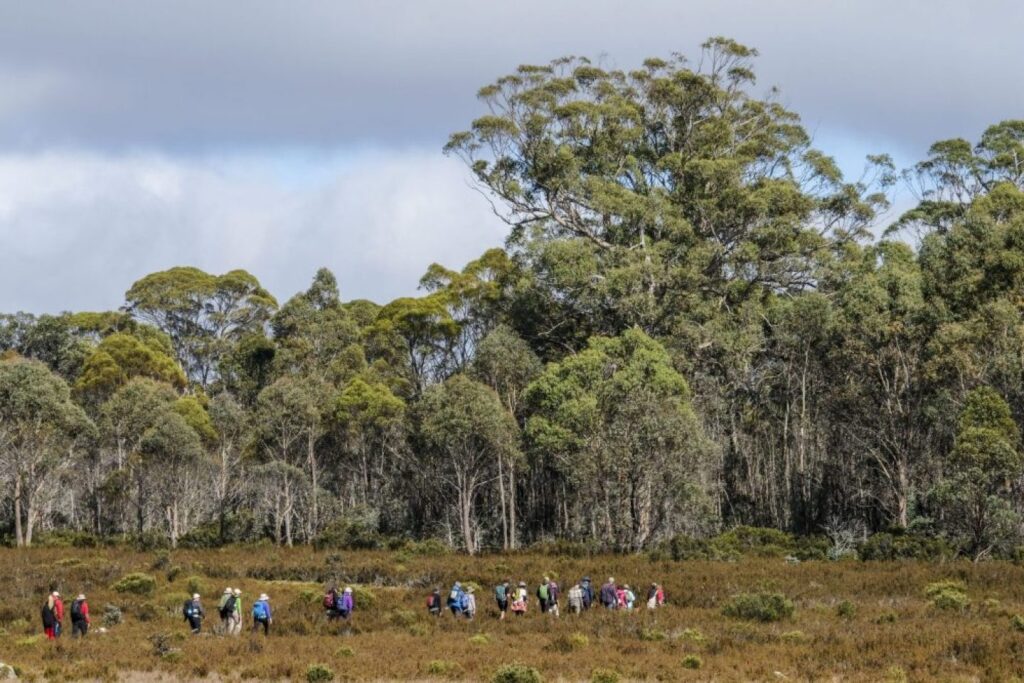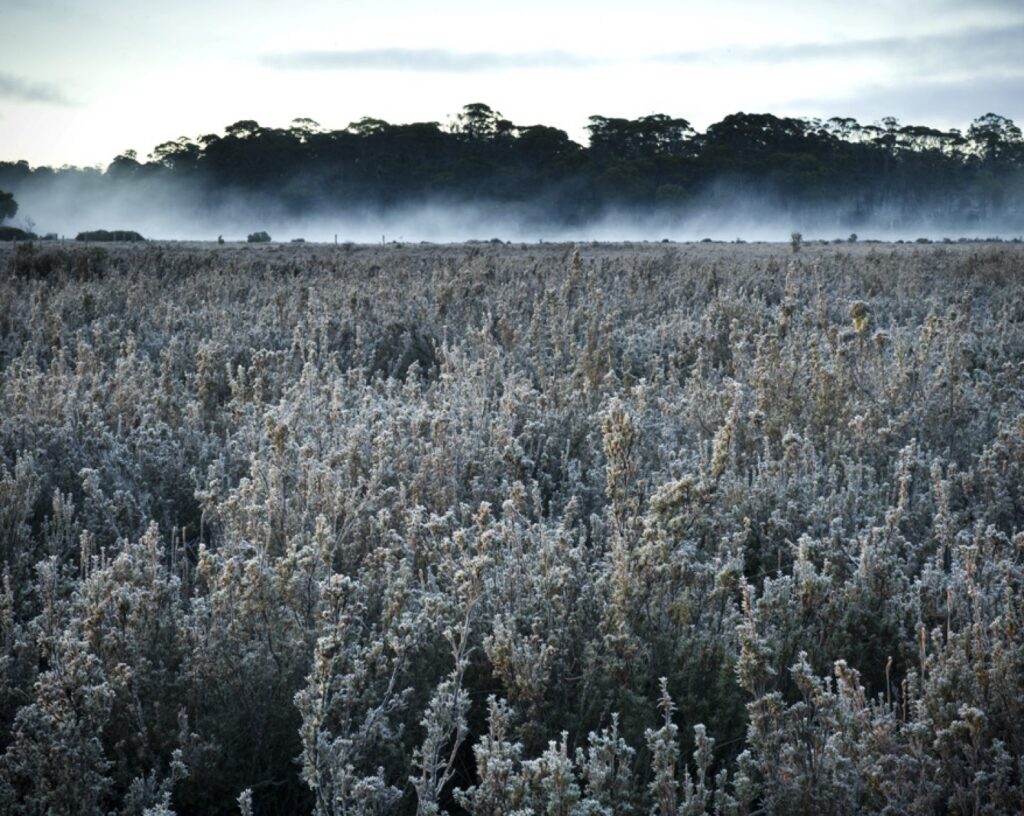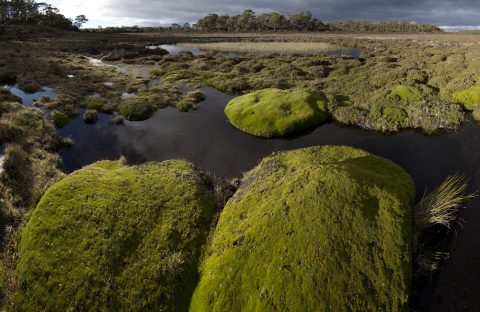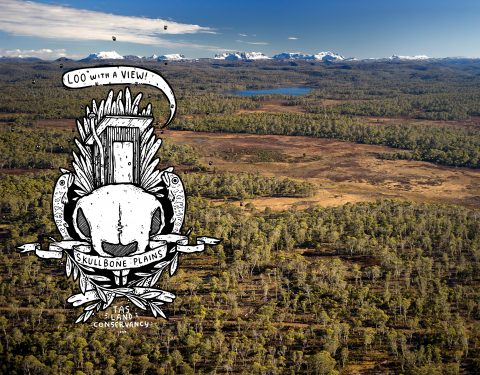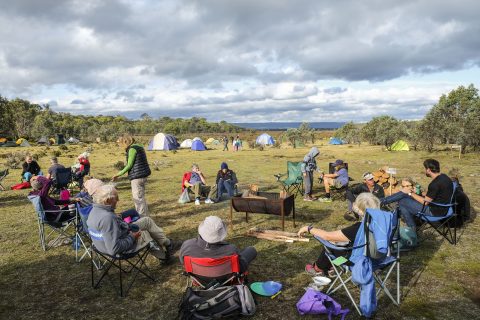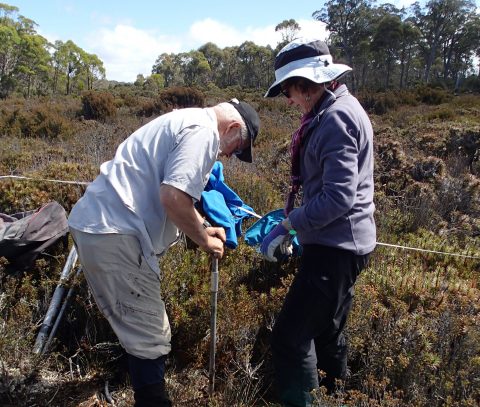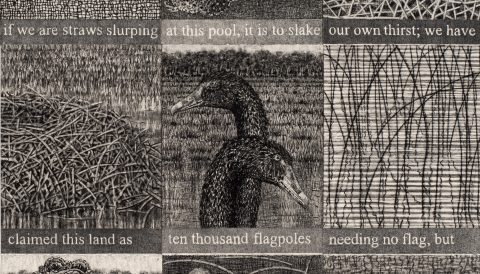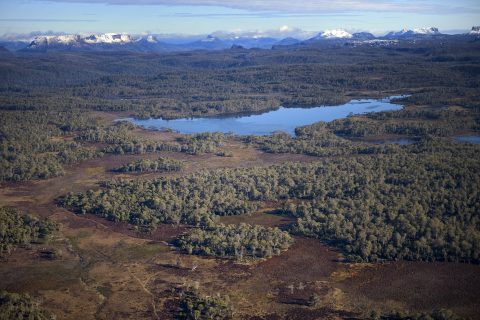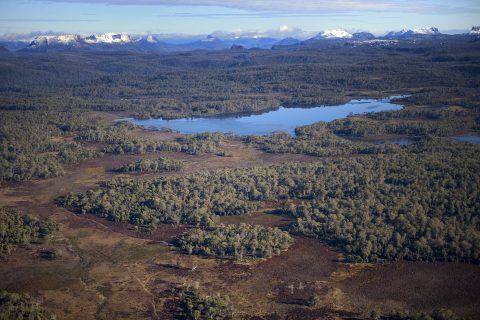NATURAL VALUES AND CONTEXT
Skullbone Plains (part of Five Rivers Reserve) consists of 1600 hectares of exquisite open valleys, old-growth forests, native grasslands, cushion plants and rare, endangered sphagnum moss beds, provides critical wild habitat for a species of nationally endangered fish, the Clarence galaxias. The endangered Tasmanian devil, spotted-tailed quoll and wedge-tailed eagle also call Skullbone Plains home.
Skullbone Plains Reserve forms part of the Tasmanian Wilderness World Heritage Area.
Clarence galaxias This nationally endangered freshwater fish is only found in six isolated locations in central Tasmania, including Skullbone Plains. It belongs to the Galaxiidae family, a group which also occurs in New Zealand and South America, suggesting radiation from a common Gondwanan ancestor. This small fish grows to about 13 cm in length and has irregular dark brown patches along its back and sides. It spawns in spring with eggs taking approximately two months to hatch. The hatchlings and juveniles feed on small insects while the diet of larger fish is comprised mainly of bottom-dwelling insects. The normal lifespan of the Clarence galaxias is thought to be four to five years. It now only survives in streams, marshlands and lakes that do not contain the introduced brown trout.
MANAGING SKULLBONE PLAINS RESERVE
The management of Skullbone Plains involves science-based activities such as assessment, control and monitoring of weeds, feral animals and threats to protect the reserve’s biodiversity and natural values. Skullbone Plains is managed in conjunction with the Five Rivers Reserve to minimise threats and impacts to natural values. This includes weed and feral animal management, access control, implementing an appropriate fire management regime, and maintenance of roads and other infrastructure. A high priority for management at Skullbone Plains is to maintain areas free of brown trout to ensure the continued survival of the Clarence galaxias population.
Skullbone Plains Discovery Weekend 2018
In March 2018, Skullbone Plains was teeming with the activity of a mini nature-based festival at TLC’s Discovery Weekend. View the clip below to discover what our supporters got up to on the two-day, overnight camping adventure!
The Skullbone Experiment
In February 2013, eleven high profile Australian artists were invited by the TLC to explore the wild and remote landscape of the Skullbone Plains Reserve. For four days they immersed themselves in the landscape, with scientific interpretation by TLC staff to deepen their experience of the reserve. Participating artists included Tim Burns (TAS), Joel Crosswell (TAS), Julie Gough (TAS), Philip Hunter (VIC), Janet Laurence (NSW), Vera Moller (VIC), Imants Tillers (NSW), Megan Walch (TAS), Richard Wastell (TAS), Philip Wolfhagen (TAS) and John Wolseley (VIC).
Curated by renowned Tasmanian landscape painter Philip Wolfhagen and arts curator Catherine Wolfhagen, the work produced from the retreat appeared in two dedicated exhibitions at the Queen Victoria Museum and Art Gallery (QVMAG) Museum, Inveresk, Tasmania from the 15 March-18 May 2014 and Galleries UNSW, Sydney from 19 July–30 August 2014. The works have since been purchased by or displayed in public galleries and private collections across Australia.
The retreat and exhibition were made possible by the generous support of the Purves Environmental Fund and the Purryburry Trust.
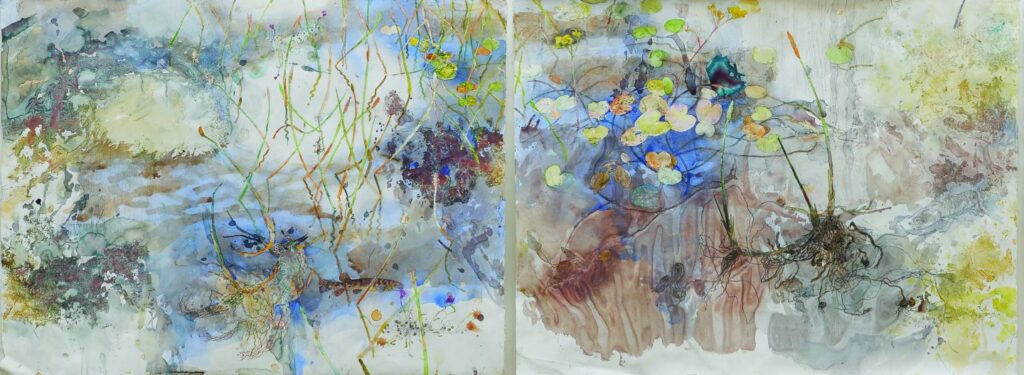
VIRTUAL REALITY NATURE EXPLORER
Click on the image below to step into Skullbone Plains Reserve and explore nature from every angle.
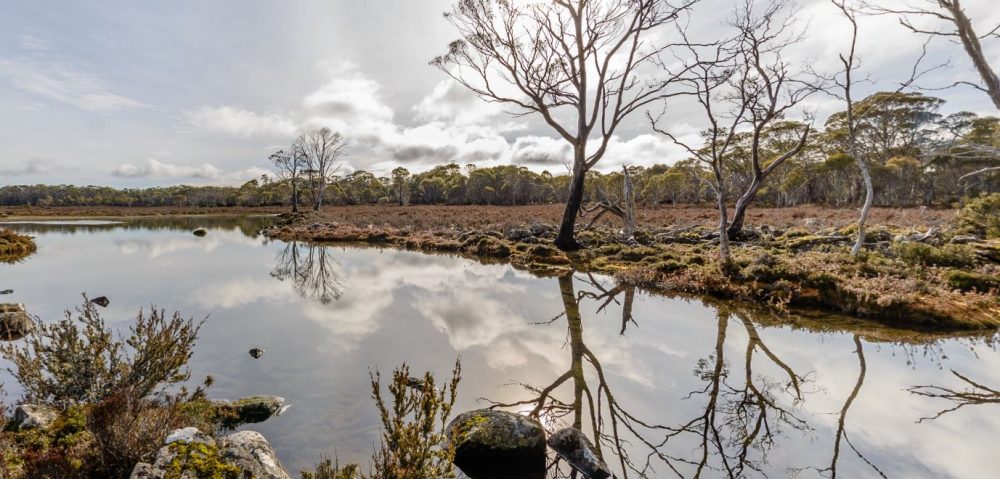
Banner photograph: Matthew Newton

